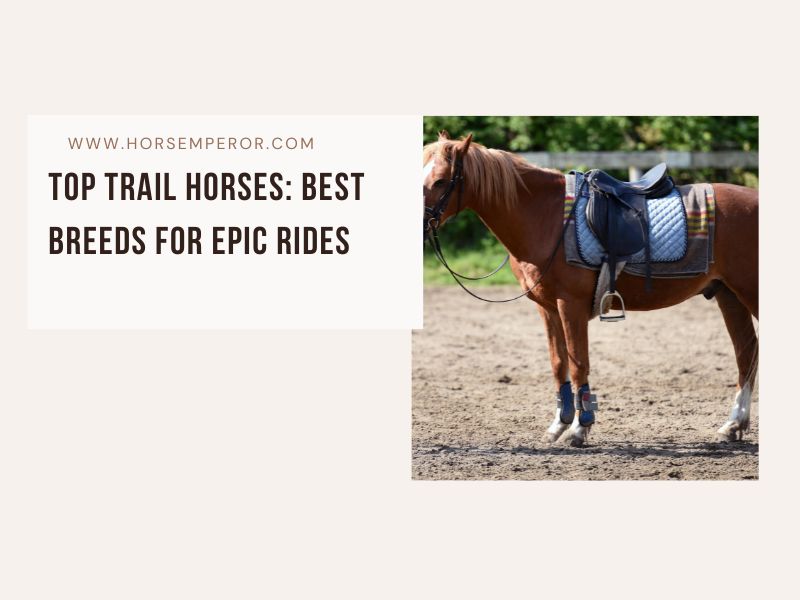After years of trail riding, one truth has become clear: not every horse can handle thick forests, mountainous ridges, and muddy paths. For this kind of adventure, you need the best horses with the stamina, temperament, and strength to face unexpected obstacles.
Whether you’re a seasoned rider or a novice, choosing a physically and mentally sound, sure-footed companion is essential. When you know you’ll face sudden animal encounters and tough footing, having a trail-ready and calm horse breed can make even the most challenging terrain feel like an enjoyable ride.
By understanding your needs and your horse’s nature, you can make an informed decision when selecting your dream horse. It’s essential to choose a horse that doesn’t get nervous or stressed in unpredictable settings.
After reading this article, you’ll be able to find a horse that is intelligent, confident, and offers the practical benefits of trail riding. Remember, riding through nature with a safe experience is not just a hobby—it’s a lifelong challenge worth embracing.
Key Traits of an Ideal Trail Horse
In trail riding, choosing the right horse is very important because you need to recognize certain characteristics that truly make a difference on the trail. You should look for a healthy, comfortable mount with strong legs and durable hooves to ensure better footing across unpredictable ground.
When you’re crossing rugged terrain, the last thing you want is a horse lacking physical soundness or needing to dismount every few minutes to deal with opening gates or obstacles. Even a shoe problem can slow down your success, which is why I always carry hoof boots as backup.
A true social companion is one who can travel long distances with or without barn buddies and doesn’t easily spook. A horse with this level of patience, confidence, and trust is the ideal trail horse.
The ideal size for a trail horse is between 14h and 16h. Larger horse breeds over 17h can make trails tricky when ducking under low-hanging branches or navigating tight spaces.
Instead of a very tall horse, a compact horse with good conformation is best for riding alone or covering long expeditions. While crossing the riverbed, a small gelding can easily maneuver and even cross water without panicking in scary spaces.
American Quarter Horse
- Height: 14 to 16 hands
- Weight: 950 to 1,200 pounds
- Life Expectancy: 25 to 30 years
- Price: Starts at $3,000
- Country of Origin: United States
- Coat Colors: Bay, black, chestnut, gray, palomino, buckskin, dun, roan, and various patterned coats
- Traits: Calm temperament, natural athleticism, intelligence, stocky build, sure-footedness, versatility, and excellent for beginners and experienced riders alike
From personal experience, I can say that the American Quarter Horse is the best breed when it comes to trail riding. Its calm, easy-going temperament makes it an all-around choice for adults, children, and beginners alike.

This versatile horse is known for its athleticism, intelligent mind, and incredible natural ability to handle rugged terrain. Over the years, this breed has proven its ability to live up to expectations every single time.
Its ideal height and compact build make it a truly unique horse breed. Their bodies are perfectly balanced—not too tall, not too short—making it easier to mount on the trail. On rough, difficult paths, its low center of gravity gives the horse a sure-footed and gracefully balanced step.
These athletes have the stamina and strength to navigate through unfamiliar trails without trouble. They were originally bred for cattle work due to their stocky, strong frame.
The American Quarter Horse is the most popular breed in the U.S. It is also renowned as the best trail partner globally. With over six million horses in their registry, they’re known for being sensible, naturally talented, and tough.
Their temperament allows them to be ridden on various trails by both beginners and experienced equestrians. This breed is found in traditional coat colors like black, bay, gray, and even patterned. It is packed with top traits that every rider looks for.
American Paint Horse
- Height: 14 to 16 hands (56 to 64 inches)
- Weight: Approximately 950 to 1,200 pounds
- Life Expectancy: 30 to 31 years
- Coat Colors: Variety of colors and patterns including Overo, Tobiano, and Tovero
- Price: Typically ranges from $3,000 to $10,000 depending on lineage and training
- Country of Origin: United States
- Traits: Calm and gentle temperament, intelligent, easy to train, sure-footed, naturally athletic, and visually striking with distinctive coat patterns
American Paint Horses are known for their natural athleticism and easy-going temperament. They are reliable and intelligent mounts, perfectly built for rugged terrain and long rides. The breed is known for being calm, gentle, and incredibly social, which makes it a top choice for both children and beginners.
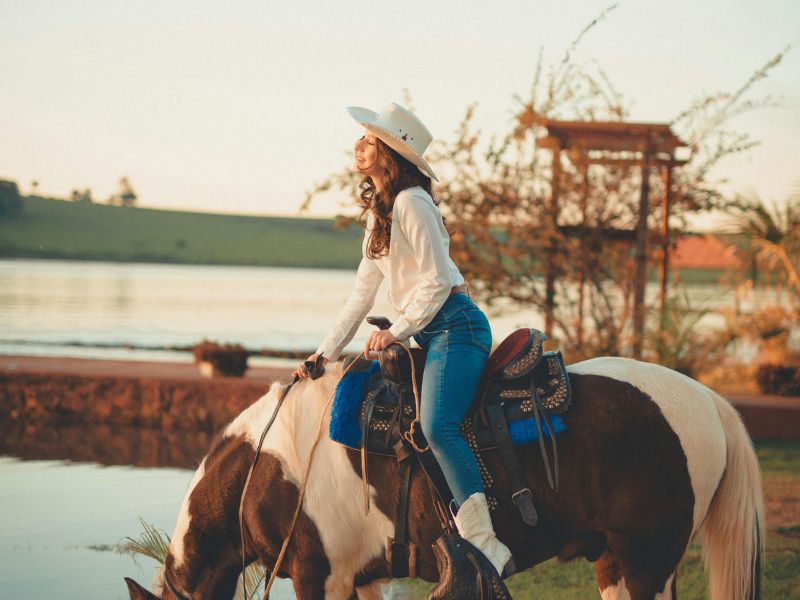
Its broad chest, muscular body, and solid hindquarters give it a strong, sure-footed step, which helps a rider feel more secure even in rough spots. Its physical characteristics make it a top-tier trail breed in all forms of riding. Its versatility and beauty make it a truly standout breed for trail riding.
Appaloosas
- Height: 14 to 16 hands high (56 to 64 inches at the withers).
- Weight: On average, 950 to 1,250 pounds,
- Life Expectancy: 25 to 30 years with proper care and management.
- Coat Colors: Known for distinctive spotted coat patterns; colors include leopard, blanket, snowflake, roan, and solid with mottled skin and striped hooves.
- Price: $3,000 to $10,000+.
- Country of Origin: United States – originally developed by the Nez Perce Native American tribe.
- Traits: Hardy, calm, gentle, beginner-friendly, sure-footed, intelligent, and visually striking due to their unique coat patterns.
Appaloosas are the perfect trail partners for riding in unpredictable weather, unfamiliar environments, or even through sudden debris. Once wild and roaming across the U.S., this breed comes from a rich origin. In the 16th century, it was domesticated by Native American tribes for carriage and farm work.
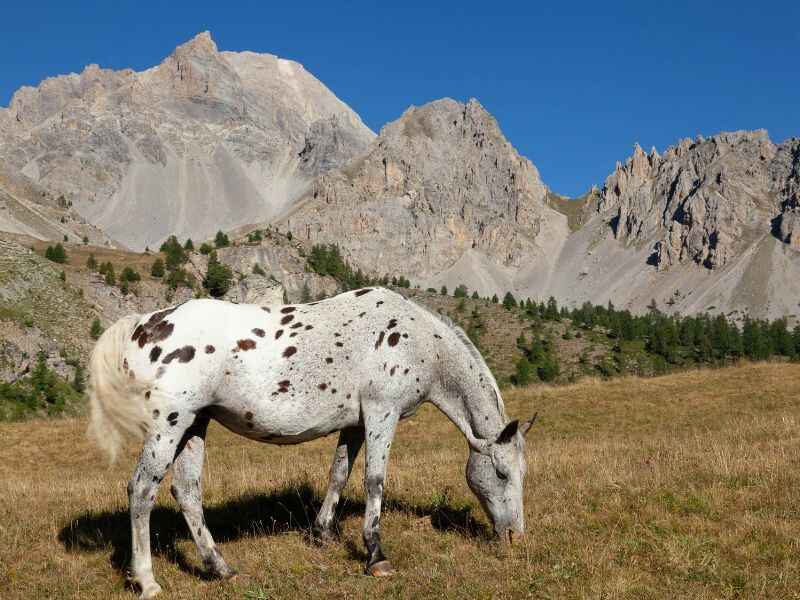
It is a hardy, athletic, and highly adaptable animal, known for its calm, collected, and composed personality. It is best suited for trail riding in desert-like terrain due to its refined blend of bloodlines from Thoroughbreds and Arabians.
One of the Appaloosa’s most noticeable features is its show-stopping coat. Its spotted and colored patterns provide riders with a visual treat. Alongside the Quarter Horse and Morgan Horse, the Appaloosa is considered one of the calmest breeds in the horse world.
They are also very friendly toward both people and animals. In terms of size, its average height is about 0.1 hands taller than the Quarter Horse. Its unique personality and friendly nature make it an excellent choice for riding in tough conditions.
Tennessee Walking Horse
- Height: Typically ranges from 14.3 to 17 hands high, with an average around 15.2 hands.
- Weight: Generally between 900 to 1,200 pounds, depending on the horse’s build and gender.
- Life Expectancy: 25 to 30 years with proper care and a healthy lifestyle.
- Coat Colors: Found in all solid colors and patterns, including black, bay, chestnut, gray, palomino, roan, and pinto; any color is permissible in this breed.
- Price: Typically ranges from $3,000 to $10,000+, depending on pedigree, training, and age.
- Country of Origin: United States – developed in the Southern U.S., particularly in Tennessee.
- Traits: Known for their smooth gaits, intelligence, gentle temperament, endurance, versatility, refined build, and beginner-friendly personality.
In trail riding, the Tennessee Walking Horse is known for its smooth gait, kind demeanour, and fun ride that flows seamlessly over the ground. Its refined shoulders, straight head, long neck, and slender, athletic build make it an elegant and comfortable choice for riding long distances.
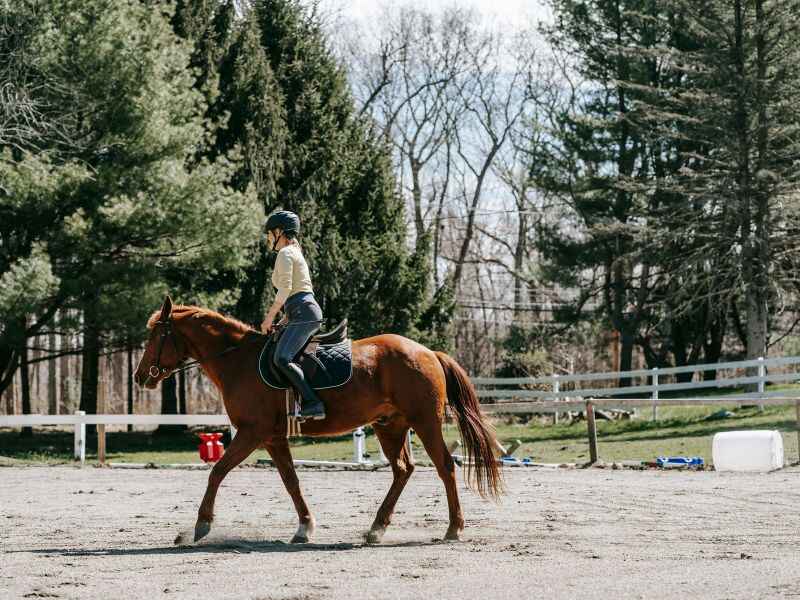
With its famous dog walk—a four-beat gait—you feel more like you’re floating than riding.
Unique features include the flat-foot walk, rack, stepping pace, and the fast gait called the running walk.
Its easy-going temperament and keen-to-please attitude make it a trustworthy companion. Due to its exceptional qualities, the Tennessee Walking Horse is consistently ranked high on every expert’s list of great horses for trail riding.
These intelligent horses shine in trail disciplines, driving, and endurance events. They come in a wide range of colours, adding a pleasing, visually unique flair to the ride. It is considered one of the best gaited breeds for the trail, thanks to its short back, long legs, and ability to help riders maintain balance.
American Saddlebred
- Height: Typically ranges from 15 to 17 hands.
- Weight: Generally between 1,000 to 1,200 pounds.
- Life Expectancy: 25 to 30 years with proper care.
- Coat Colors: Found in many solid colors including bay, black, chestnut, gray, and palomino; some may also have white markings.
- Price: Usually ranges from $2,500 to $15,000+, depending on training, pedigree, and age.
- Country of Origin: United States, originally developed from British and American colonial horses.
- Traits: Known for their elegant build, arched neck, refined head, smooth gait, adaptability, even temperament, and willingness to learn—making them suitable for trail riding and other disciplines.
In trail riding, the American Saddlebred often gets overlooked despite its calm temperament. Over the years, it has refined itself into a highly adaptable breed.
It is known for its short back, arched neck, and refined head. Its smooth jawline and chiseled features give it a clean and beautiful look that makes every rider feel like they’re riding a piece of art in motion.
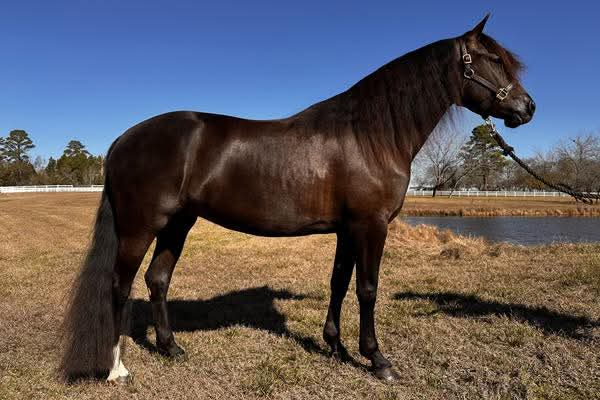
The American Saddlebred has a rich history, originating from Britain. Galloways and Hobbies were the first to make their mark, arriving centuries ago.
Over time, crossing them with pacers and Thoroughbreds helped produce the striking and strong horses we know today as American Saddlebreds. It is a highly versatile breed that stands between 15 and 17 hands, making it perfect for a range of equestrian disciplines.
Its ability to tackle new challenges makes it an excellent choice for any trail quest. It is an easy-keeper, doesn’t demand a lot of extra attention, and its willing spirit makes it a joy to bond with. Whether you’re a beginner or a seasoned rider, the standard Saddlebred will surely impress you with both style and stability.
Icelandic Horse: Best for Beginners
- Height: Averages between 13 to 14 hands (52 to 56 inches); considered small but sturdy.
- Weight: Typically weighs between 730 to 840 pounds (330 to 380 kg).
- Life Expectancy: Known for an incredibly long lifespan, often living up to 40 years or more.
- Coat Colors: Comes in over 40 coat colors and 100 variations, including chestnut, bay, black, palomino, dun, gray, and pinto.
- Price: $6,000 to $14,000+, depending on age, training, and pedigree.
- Country of Origin: Iceland; the breed has been pure for over 1,000 years.
- Traits: Strong, intelligent, friendly, calm, independent, with a smooth tölt gait and excellent for cold-weather trail riding.
The Icelandic horse is a unique breed known for its short stature, often called ponies. Native to Iceland, it is a stocky, short-legged horse that can survive cold, inclement regions. Their heavy coats and thick necks help them thrive in colder temperatures.
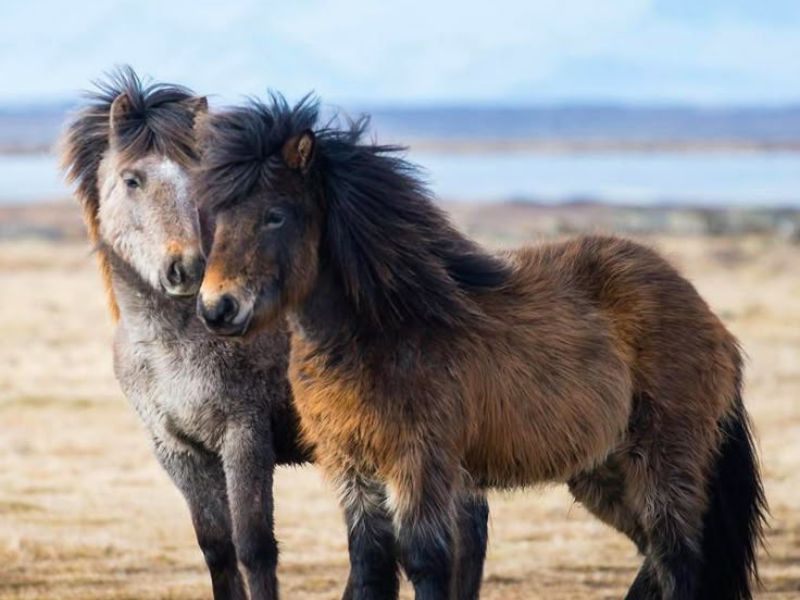
These horses have an incredibly long lifespan, living for decades while staying in good condition. On long trails, their sturdy build covers them well for long days on the trail.
Moreover, their low maintenance makes them cost-effective. Their refined, calm temperament, and independent nature make them excellent for unpredictable trails. In cold-weather, these short horses are more effective than many full-grown adult horses.
These horses might not be large in size but are very strong and reliable. They’re often used for carrying gear, riders, and supplies across rough terrain. Their ability to adapt well to both warm and cold climates makes them a perfect trail partner.
Paso Fino
- Height: Typically ranges from 13 to 15.2 hands
- Weight: Averages between 700 to 1,100 pounds
- Life Expectancy: Around 25 to 30 years with proper care
- Coat Colors: Commonly seen in bay, chestnut, black, gray, and other solid colors
- Price: Usually ranges from $5,000 to $15,000, depending on training and bloodline
- Country of Origin: Developed in Puerto Rico and Colombia, with roots in Spanish horses
- Traits: Known for their smooth gait, docile temperament, stamina, intelligence, and trainability
The Paso Fino breed has its roots in South America and the Caribbean, especially in Puerto Rico and Colombia. It was developed from Spanish horses brought to the Americas by the conquistadors.
These early horses included the elegant Andalusians, strong Spanish Barbs, and the now-extinct Spanish Jennet, which was highly valued for its naturally smooth and comfortable gait.
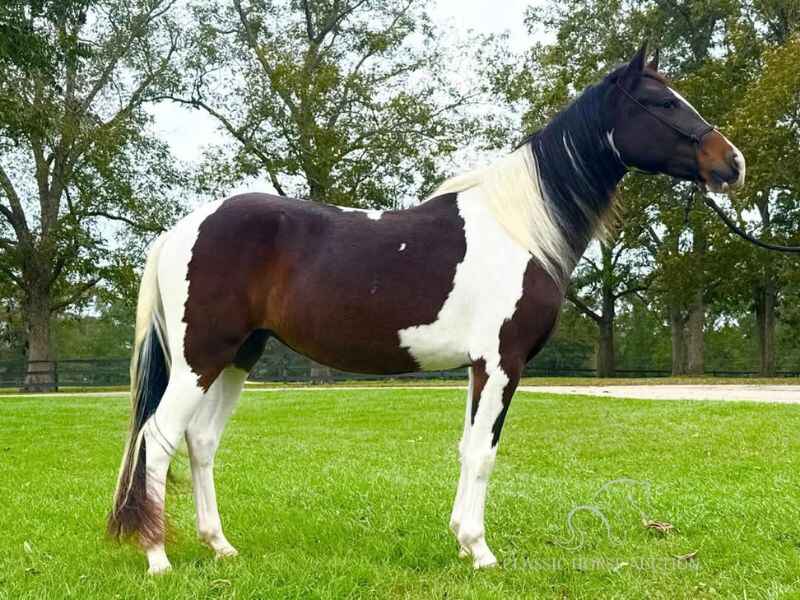
Over the decades, these breeds mixed and evolved, creating the uniquely gaited Paso Fino we know today—famous for its beauty, intelligence, and a ride that feels like you’re floating.
These horses often come with a unique iris hue of orange or yellow in their eyes and commonly have black manes and tails. These mid-sized gaited horses are known for their stamina, hardy hooves, and kind nature. Their unique features include three gaits—the Paso Corto, Paso Largo, and the classic Paso Fino.
During shows, competitions, or festive parades, these gaits shine with such poise that everyone gets on their feet to witness the joy. Their docile, gentle, and incredibly trainable nature makes them ideal for training, events, and team activities like mounted shooting or trail riding in groups.
Morgan Horse
- Height: 14.1 to 15.2 hands
- Weight: 900 to 1,100 pounds
- Life Expectancy: 20 to 30 years
- Coat Colors: Bay, black, chestnut, palomino, buckskin, gray
- Price Range: $3,000 to $10,000 (can vary based on training, lineage, and discipline)
- Country of Origin: United States of America (USA)
- Traits: Versatile, intelligent, laid-back, gentle nature, strong stamina, excellent conformation, sure-footed, deeply-muscled, great for both English and Western disciplines
Morgan Horse is a versatile breed known for long trail rides through rocky, challenging terrain. It originates from America and was bred by Justin Morgan. This strong, sure-footed breed was developed to work hard and handle multiple disciplines with ease.
Its deeply-muscled body, solid hooves, and sturdy frame make it a strong and reliable horse for both beginners and experienced riders. Its rock-solid footing, stamina, and endurance make it a dependable partner.
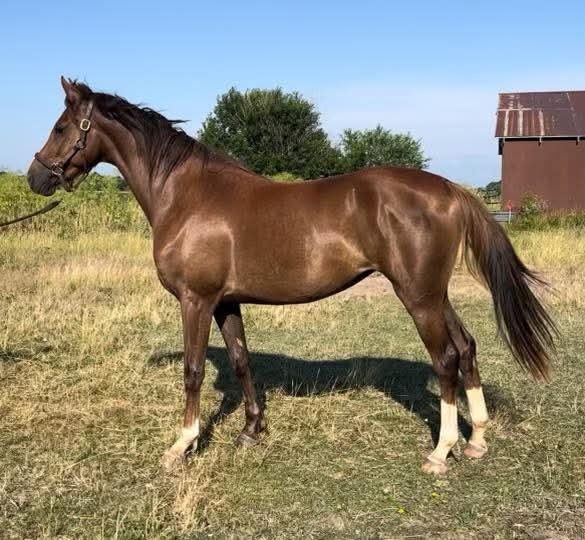
What makes the Morgan Horse stand out is its laid-back, gentle nature and highly intelligent mind. It is one of the best horses for training in disciplines like dressage, jumping, or western events like cutting or western pleasure. I once joined a 100-mile endurance ride, and the Morgan I rode stayed strong till the very end without slowing down. That kind of heart is rare.
Due to their beautiful conformation and excellent build, they compete confidently in eventing, pleasure, and even local shows. It is an underrated breed that needs more attention in English and Western competitive trail riding communities.
Mustang
- Height: 14 to 15 hands (some stallions may reach up to 16 hands)
- Weight: 800 to 1,000 pounds (approximate average)
- Life Expectancy: 25 to 40 years with proper care
- Coat Colors: Found in almost every color including bay, black, chestnut, dun, roan, gray, and pinto
- Price: As low as $125 through the Bureau of Land Management (BLM)
- Country of Origin: America (descendants of Spanish horses)
- Traits: Strong, intelligent, extremely hardy, independent, athletic, high stamina, sure-footed, adaptable to tough terrain
Mustang is one of the top horse breeds for trail riding. It was born in the wild and shaped by the forests and rugged lands of America. Due to its independent nature, it can survive on limited water and rehydrate with rare stops.
A feral Mustang has the resilience and ability to think through every challenge on the ride. Despite being average-sized, its strength, hardiness, and stamina shine in the toughest conditions.
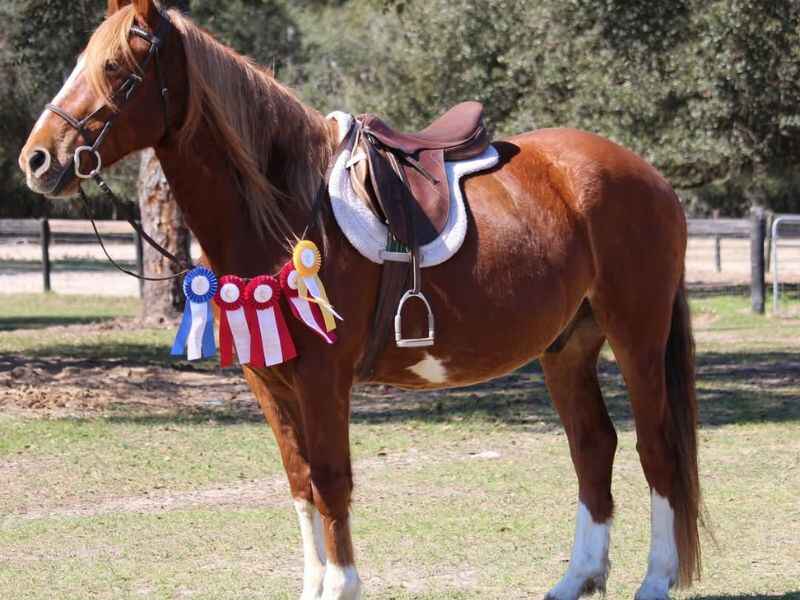
Many riders overlook Mustangs, but they deserve more attention due to their amazing hidden traits. Although it is not an official breed, it is a descendant of Spanish horses that escaped captivity centuries ago.
Its short back with rounded croups makes it comfortable for long hours in the saddle. With the right training, these strong, athletic horses can compete in any discipline—jumping, competitive riding, or a rugged 100-mile ride.
The best quality of the Mustang is that you can buy a domesticated horse for as little as $125 through the Bureau of Land Management (BLM). Mustangs are not for beginners, but if you’re an experienced or professional rider, then you can consider this amazing horse.
Conclusion: Best Horse for Trail Riding
In trail riding, choosing the best breed depends on your goals, budget, and experience. Quarter Horse, Paso Fino, and Paint Horse stand out as top choices for riding.
The Quarter Horse has a steady mind and quiet-tempered nature, which makes it ideal for long rides. Its calm nature and adaptability make it a perfect fit for riders of all skill levels. If you are a beginner or a child who wants to enjoy a safe ride, then the Icelandic Horse can be an ideal companion due to its small size and smooth tölt gait.
Thanks to their athletic build, stamina, and slender bodies, you can consider American Paint and Mustang horses as budget-friendly options. So whether you pick the calm and friendly Quarter Horse or the beginner-friendly Icelandic Horse, it depends on your personal needs and goals. The right horse is the one that makes every ride feel memorable and safe.
